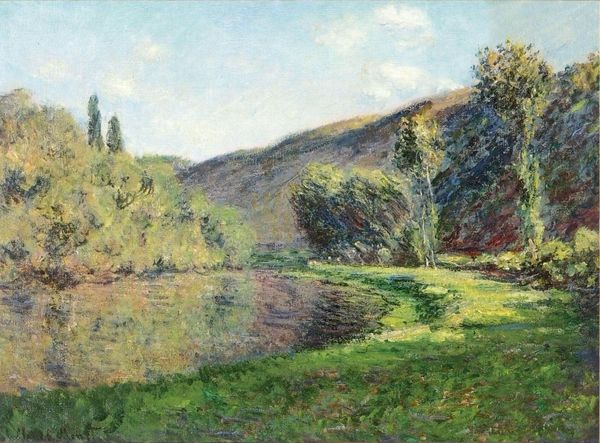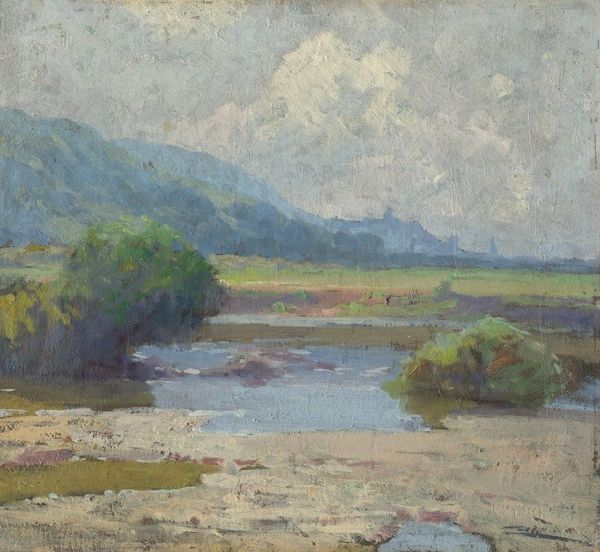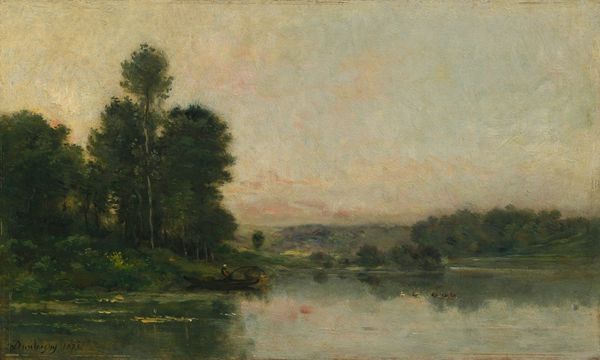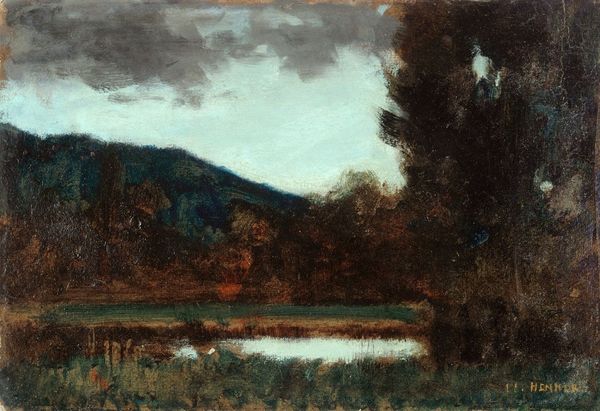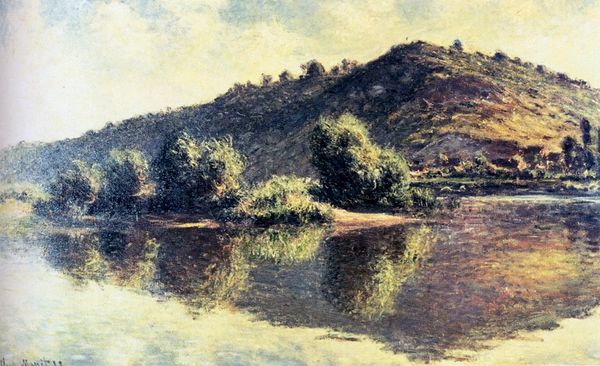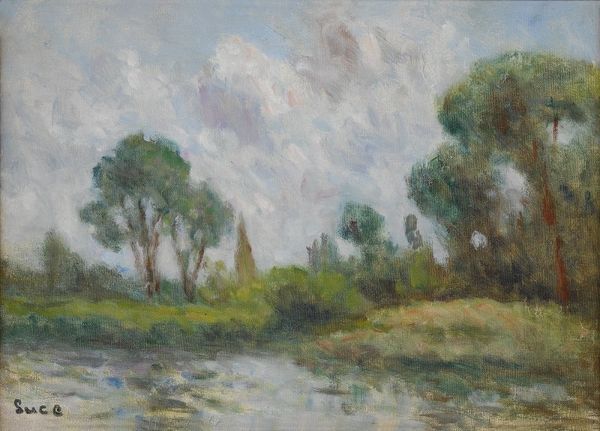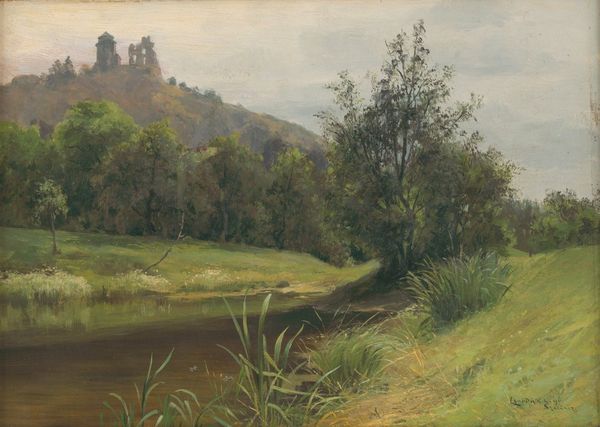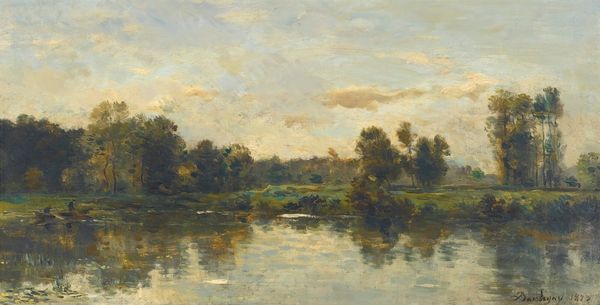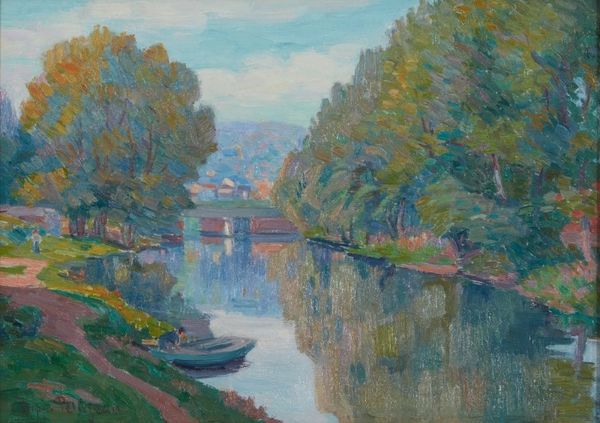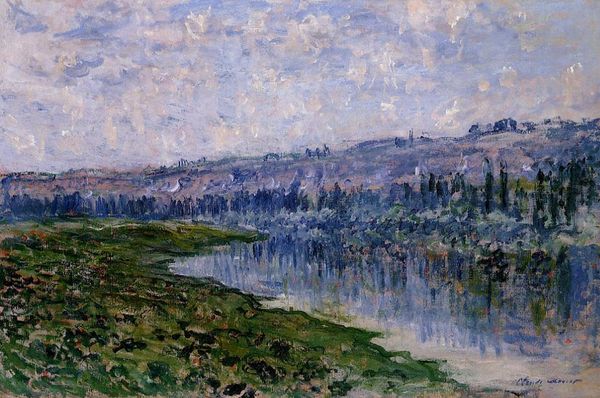
Dimensions: 39.5 x 54 cm
Copyright: Pyotr Konchalovsky,Fair Use
Curator: Looking at this landscape, "The Evening. Landscape with a Lake," painted in 1939 by Pyotr Konchalovsky, the materiality speaks volumes about its place in art history. Editor: It does have a tranquil, almost melancholic feel to it. The subdued colours, the stillness of the water... it's like a moment suspended in time. Makes you want to breathe deep and contemplate. Curator: Indeed. Consider the oil paints themselves – a readily available medium in the late 1930s, yet Konchalovsky uses them with visible brushstrokes, almost defying the slickness that industrial production allowed. It hints at a resistance, perhaps, to fully embracing mass-produced aesthetics, a longing for a hands-on approach. Editor: It's true. I see the hand of the artist in every stroke, every ripple on the lake. You can feel him wrestling with the light, trying to capture that fleeting moment of dusk. It feels so personal, like a memory being translated onto canvas. Did he visit this place, do you know? Curator: Archival evidence suggests Konchalovsky travelled extensively during that period, and the accessible, almost utilitarian nature of oil paints facilitated this on-site creation. They were relatively inexpensive to acquire, portable, easily manipulated—ideal for plein air painting, as he practiced. This speaks to a democratizing element, making art production achievable for a wider segment. Editor: But beyond the pragmatism of the materials, I keep coming back to the emotion in this painting. The way the trees frame the scene, those hazy blues and greens reflected in the water – it's more than just a landscape; it’s a feeling. Nostalgic. Perhaps, even a little haunting. Curator: A post-impressionist’s sentiment maybe, the use of everyday accessible mediums allowed artist personal freedom, especially evident if juxtaposed with some totalitarian dictates on art production. Editor: Right, in a way it uses humble elements to tell a profound story about our connection to the natural world, doesn't it? Curator: Exactly, its enduring charm lies in its engagement with, but not necessarily in blind worship to, modern production. A critical stance evident in its construction. Editor: Makes you see beauty in the simplest of things. Thanks, Materialist!
Comments
No comments
Be the first to comment and join the conversation on the ultimate creative platform.
